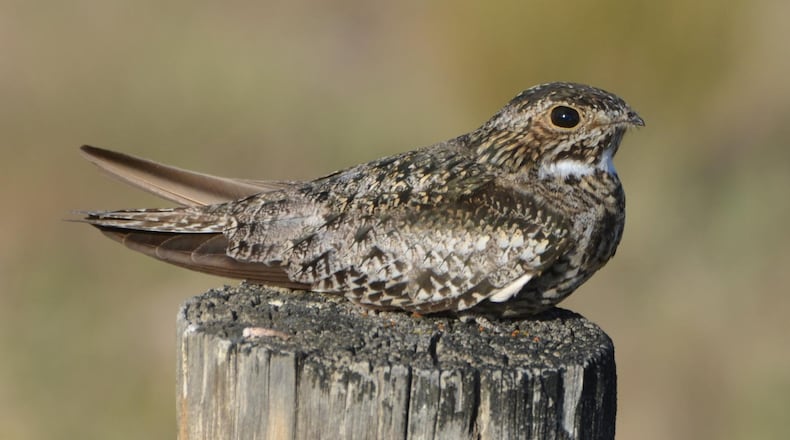I was going to my car in a DeKalb County parking lot one evening this week when I heard a distinct nasal “peenting” sound from across the lot. Common nighthawks, I suspected.
Sure enough, at the edge of the parking lot I saw four or five of the amazingly acrobatic birds darting, looping and fluttering about a bright light atop a utility pole. With their large mouths wide open and uttering their telltale peents, the medium-size birds were chasing and feeding on a cloud of flying insects swarming around the light.
The nighthawks’ amazing flying dexterity thrills bird lovers, and now is the best time of year to observe them in Georgia. Reports of common nighthawk sightings light up birders’ chat lines this time of year.
From late summer into early fall the birds are migrating to South America for the winter in flocks that may number several hundred birds. As they forage on the wing for insects, they put on memorable displays of aerial agility that few bird species can match. When flying, their slender, pointed wings are marked with a striking white stripe near the wingtips.
Many Southerners know the nighthawk by the name “bullbat,” perhaps because of the bird’s bounding, erratic, almost bat-like flying patterns. The nighthawk’s actual name, though, also is misleading because the bird is most active at dawn and dusk, not night, and it is most closely related to whip-poor-wills and chuck-will‘s-widows, not hawks.
Come spring, when nighthawks return to North America, they will nest across most of Georgia, laying eggs on the bare ground or on flat-topped roofs. Because of their superb gray, white, buff, and black camouflage, nighthawks are difficult to see on their nests. Nighthawk populations in the Northeast are in alarming decline because of loss of suitable nesting sites.
IN THE SKY: From David Dundee, Tellus Science Museum astronomer: The moon will be first-quarter on Sunday. Brilliant Venus is very low in the southwest just after dark and sets about two hours later. Mars, also shining brightly, is in the southeast at dusk and will appear near the moon on Wednesday night. Jupiter is in the southwest at dusk. Saturn is low in the southwest just after dark and will appear near the moon on Sunday night.
About the Author
The Latest
Featured


